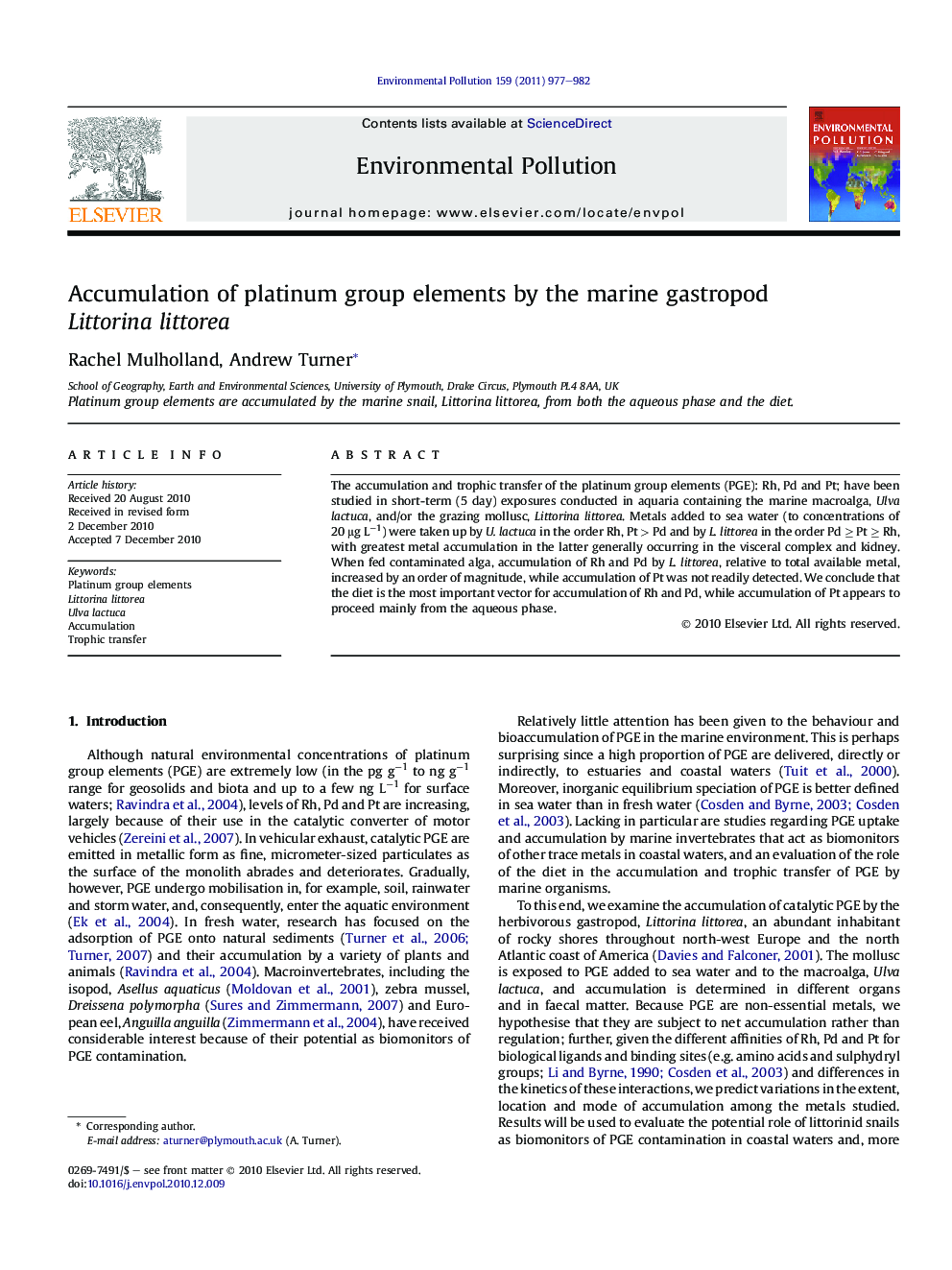| Article ID | Journal | Published Year | Pages | File Type |
|---|---|---|---|---|
| 4424850 | Environmental Pollution | 2011 | 6 Pages |
The accumulation and trophic transfer of the platinum group elements (PGE): Rh, Pd and Pt; have been studied in short-term (5 day) exposures conducted in aquaria containing the marine macroalga, Ulva lactuca, and/or the grazing mollusc, Littorina littorea. Metals added to sea water (to concentrations of 20 μg L−1) were taken up by U. lactuca in the order Rh, Pt > Pd and by L. littorea in the order Pd ≥ Pt ≥ Rh, with greatest metal accumulation in the latter generally occurring in the visceral complex and kidney. When fed contaminated alga, accumulation of Rh and Pd by L. littorea, relative to total available metal, increased by an order of magnitude, while accumulation of Pt was not readily detected. We conclude that the diet is the most important vector for accumulation of Rh and Pd, while accumulation of Pt appears to proceed mainly from the aqueous phase.
Research highlights► Platinum group elements are accumulated by, Littorina littorea. ► The aqueous phase and diet are important vehicles for Rh and Pd accumulation by the snail. ► Grazing molluscs may serve as biomonitors of coastal PGE contamination.
